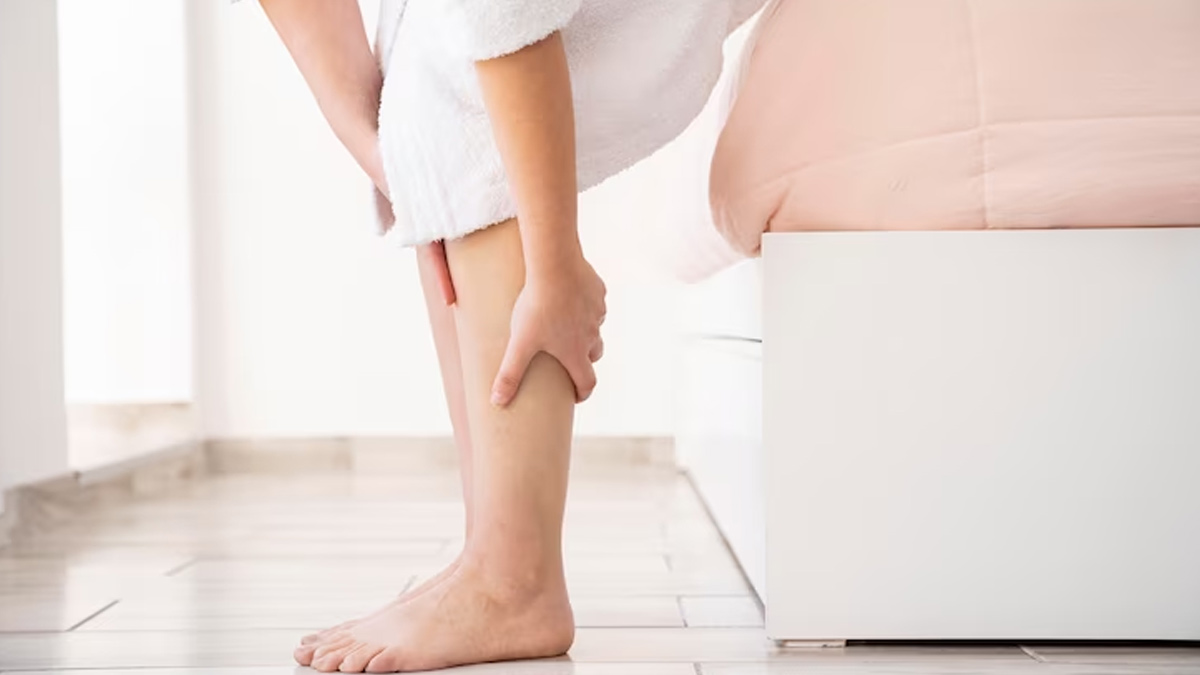
Cholesterol has earned itself a bad reputation, not just because of its association with heart problems but also because it is silent in how it affects different body parts. But what most of us need to know is that not all cholesterol is terrible. There are two types, simply known as “good” and “bad” cholesterol, of which the “bad” one can lead to several ailments, including Peripheral Artery Disease (PAD).
Table of Content:-
We at Only My Health spoke with Dr Jaideep Menon, Consultant, Adult Cardiology, Amrita Hospital, Kochi, to help us give you an understanding of how high cholesterol affects the body, its link to PAD and the symptoms that can arise in the legs.
Also Read: 7 Reasons Why Your Cholesterol Level Is Not Reducing
How Does High Cholesterol Affect The Body?

According to Dr Menon, cholesterol is a type of fat produced naturally by the liver and found in certain foods. Its functions involve the production of hormones, vitamin D, and bile acids that aid digestion. However, having excess cholesterol in the blood can be dangerous and increase the risk of heart disease.
"Cholesterol is carried in the blood by lipoproteins, which are made up of proteins and fats,” said Dr Menon, and explained the two types of cholesterol in detail.
Low-density lipoprotein (LDL) is often called "bad" cholesterol because it can increase your risk of coronary artery disease by contributing to the build-up of fatty deposits or plaque in the arteries. Simply put, it can lead to blockages.
High-density lipoprotein (HDL) is "good" cholesterol because it helps remove excess cholesterol from the bloodstream.
"Having too much LDL cholesterol in the blood can increase the risk of developing heart disease and other cardiovascular problems, while high HDL cholesterol levels may be protective against these conditions. Therefore, it is important to maintain healthy levels of both types of cholesterol in the blood," Dr Menon explains.
Also Read: How High Cholesterol Affects Your Eyes: Signs You Should Not Ignore
Link Between High Cholesterol and Peripheral Artery Disease (PAD)
Peripheral Artery Disease (PAD) is a condition wherein the arteries that supply blood to the legs and feet get blocked, mainly due to a build-up of fatty deposits called plaques.
"LDL cholesterol can build up in the walls of the arteries, forming plaques that narrow and harden the arteries," Dr Menon says.
"Over time, this narrowing can restrict blood flow to the legs and feet, causing pain and other symptoms associated with Peripheral Artery Disease," he adds.
Signs Of PAD In Your Feet
PAD symptoms can differ in people, depending on the severity of the condition. These may include:
- Pain or cramping in the legs or feet, especially during physical activity or exercise, also known as claudication
- Numbness or weakness in the legs
- Cold or tingling sensations in the legs or feet
- Wounds on the feet or legs that do not heal or heal very slowly
- Weak or absent pulse in the feet or legs
- Constant leg or foot pain even when the person is at rest
How To Reduce the Risk Of High Cholesterol

Here are the lifestyle changes you can make:
Maintain a healthy diet: A diet rich in fruits, vegetables, whole grains, and lean protein sources; avoid foods high in saturated and trans fats, such as fried foods and fatty meats
Exercise regularly: Brisk walking, running, cycling, or swimming can help to increase HDL (good) cholesterol levels and reduce LDL (bad) cholesterol levels.
Maintain a healthy weight
Quit smoking
Manage stress
Get regular cholesterol screenings: The American Heart Association (AHA) recommends that all adults 20 or older should get their cholesterol checked every four to six years as long as their risk remains low.
Takeaway
High cholesterol is a silent illness that usually triggers no symptoms, which is why it is often hard to track. The key is to be aware. Going for regular health screenings, getting your cholesterol levels tested and keeping it in check with healthy foods should be prioritised.
Also watch this video
How we keep this article up to date:
We work with experts and keep a close eye on the latest in health and wellness. Whenever there is a new research or helpful information, we update our articles with accurate and useful advice.
Current Version